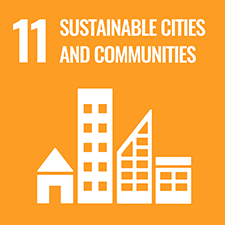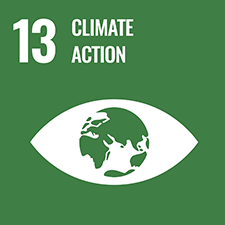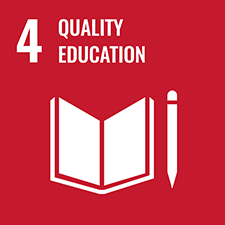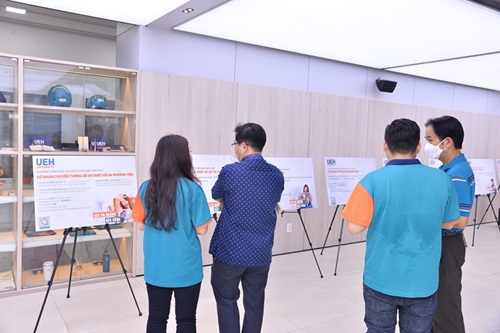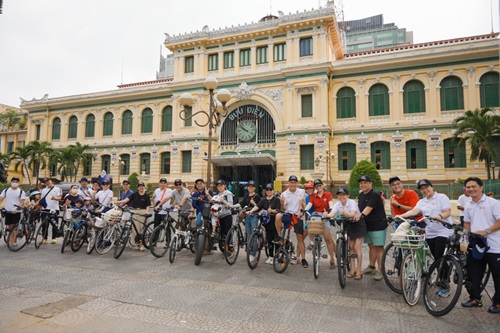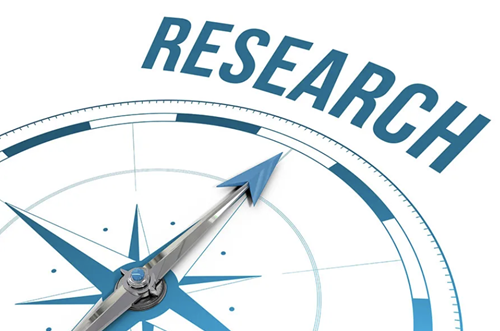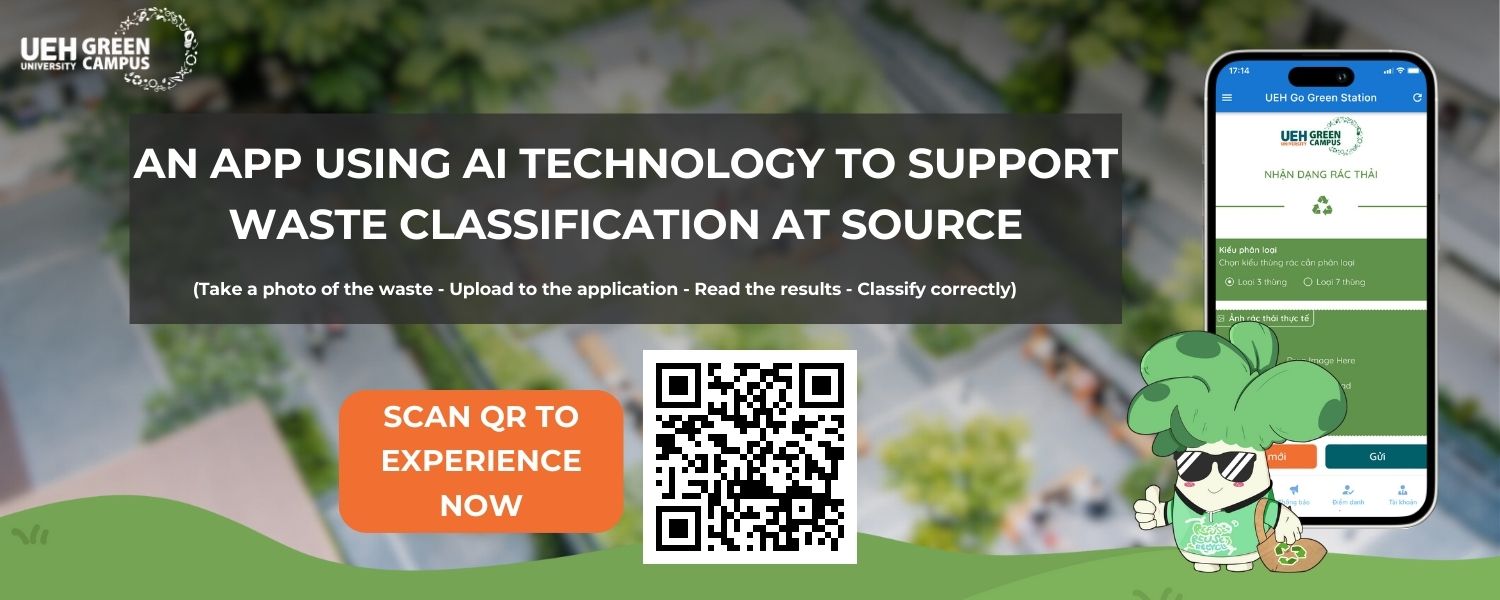
UEH applying AI technology in implementing green university toward building a living lab model at UEH Campus
05 Sep, 2023
After promulgating the Green Campus Regulations in July 2023, recently, the University of Economics Ho Chi Minh City (UEH) has officially launched an Application (App) to support the identification and classification of waste at source based on artificial intelligence (AI) platform, developed by lecturers at the university. This is an important step to deploy the Living Lab model to solve problems on the University campus, toward a Green Campus.
Living Lab Green Campus Version 2023: Efforts to solve the challenges that make waste separation at source ineffective in campuses
Within the framework of UEH Green Campus Project, the UEH Green Campus Living Lab model is implemented with the important goal of building a community of lecturers and learners with a green lifestyle not only at the 13 campuses of UEH but spreading to life outside the campuses. Living Lab is understood as a model of applying technological solutions and innovation to solve problems that arise in life in accordance with the principle of taking people as the center and connecting multi-dimensional resources from different stakeholders.
Accordingly, UEH’s 2023 Green Campus Regulations were just launched in July 2023, emphasizing 3 main parts:
Classify waste at source into 3 types (food scraps, recyclables, residual trash) or 7 types (liquids, food scraps, metals, recycled plastics, paper, milk cartons, and residual waste), arranged depending on the specific conditions of each campus;
Practice the 3R principle of Reduce, Reuse and Recycle;
Practice green campus principles including: Carrying out waste removal and classification; Keeping academic spaces and the environment clean; Protecting and preserving campuses and equipment at UEH campuses; Saving resources on electric lights, air conditioning, water, and office paper; Increasing greenery at desks, offices, and living rooms; Increasing physical activities and using stairs within campuses; Choosing and using public transportation, UEH Shuttle Bus.
The first priority is to effectively classify waste in the university’s campuses. Only when waste classification at source is performed correctly, will waste become a quality input for recycling and become a resource, starting a new life cycle. Afterthat, the amount of waste landfilled into the environment can be limited. With this perspective, UEH has connected with a network of partners in recycling to form a closed cycle.
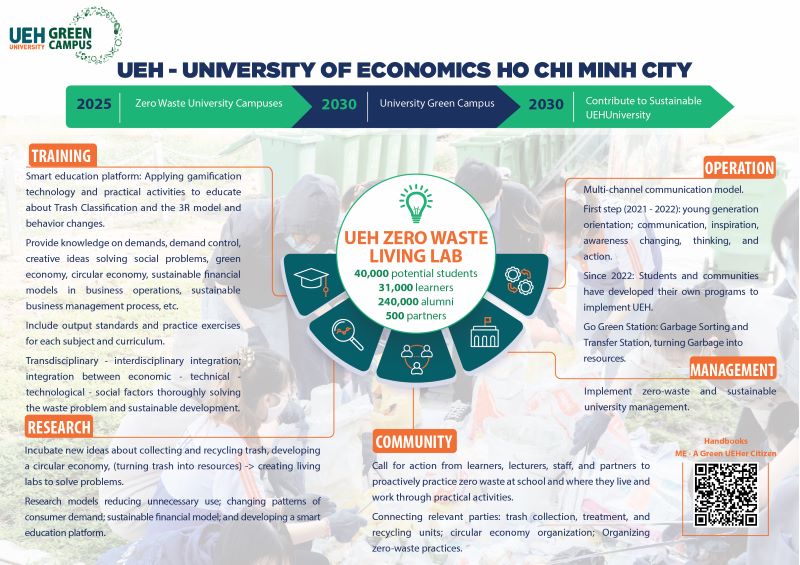
The closed cycle toward effective waste classification at UEH
However, when practicing waste classification at source, one of the difficulties that receives the most feedback from the young community in general and students at UEH, in particular, is not knowing what type of waste needs to be thrown away and what kind of waste needed to be thrown in which box. Although there have been many diverse knowledge-sharing programs and activities, how to support the practice of quickly and effectively classifying waste at source, aiming at long-term behavioral adjustment, is still a question posed by UEH. Understanding this difficulty, UEH launched an App to support trash identification, based on artificial intelligence technology for UEHers and is open to the community for free. Notably, the App was developed by UEH lecturers.
Innovative technology solution: APP supporting waste classification using AI technology, free for the community
The tool, integrated into the internal UEHers App for officials and the UEH Student App, is open for free on the website //gogreen.cixiu99.com/ mobile version for the community.
.jpg)
.jpg)
With only 04 steps: Take a photo of the Waste - Upload it to the application - Read the results - Classify correctly:
Step 1. Take photos of trash: When there is a need to dispose trash but no idea of its type, users can take photos with their mobile phones (Note: Users need to grant permission to take photos to the application).
.jpg)
Step 2. Upload to the app: Depending on users, they can upload the photos of trash to UEHer App, UEH Student App or Website //gogreen.cixiu99.com/ mobile version (Select Tool AI Garbage Classification menu).
.jpg)
Step 3. Read the results: After uploading the photo, in just a few seconds, the tool will read the image and return the result about types of waste in accordance with the Classification Model 3 (leftover food, recyclable,residual waste) or Model 7 (liquids, leftovers, metals, recycled plastics, paper, milk cartons and residual waste) of UEH.
.jpg)
Step 4. Proper classification: Based on the displayed results, in the final step, users only need to put the Trash in the correct type of Trash bin.
.jpg)
Up to this point, this is the first AI-integrated garbage identification application to be launched at a Vietnamese university. Because the training process for machine learning lacks data, some cases will be identified incorrectly, it is necessary for users to apply and to reflect more regularly the classification that is not correct so that the tool will continue to be perfected and improve its accuracy.
With the spirit of innovation, toward a Sustainable University, University of Economics Ho Chi Minh City wishes to connect with Universities, Organizations, Businesses, and Communities to model UEH Green Campus Living Lab.
Bui Quang Hung - Vice President of UEH - emphasized: "With the serious and disciplined application of the UEH Green Campus Living Lab model at the UEH Campuses in Ho Chi Minh City and UEH Vinh Long Campus, UEH expects to bring a green and sustainable lifestyle to the entire UEHer including officials, employees, and learners. Since then, it has spread the project with a meaningful message to the community of major universities in the Ho Chi Minh City; at the same time, continuing to connect with partners in the field of green economy and circular economy, creating positive impacts on the economy, environment and society.
*Further information regarding the UEH Green Campus project:
After consulting the strategy of Sustainable University, Green Campus, and Circular Campus on a global scale, along with interacting with leading experts in the field of environment and waste management, University of Economics Ho Chi Minh City has found a model to deploy the UEH Green Campus project in the form of a Living Lab. Launched in 2021, the project is one of the important links in the University’s goal of a Multidisciplinary and Sustainable University in 2021-2030. With the message "Rethink & Be Green", the project received the companionship of Trong Hieu and the mark of success when becoming the champion of the international competition "Challenge of Zero Waste City" by Waste Aid NGO and many international sponsors, with a prize worth 10,000 Euro and 06 months of professional advice from the Council of World Environmental and Circular Economy.
In more than two years of establishment, the project, with many activities to spread new approaches to sustainable green living activities helping change UEHer's perceptions, receives strong responses through communication activities on digital platforms of the project as well as at the Orientation Week: “Rethink and Be Green” Podcast series; articles and videos spreading knowledge about "practice zero waste", UEHer Green Citizen MV; "Me - A Green UEHer Citizen" Handbook; The Garbage Story Creation Contest, etc.
Entering 2023, with the key message of "Time for go green", the project's main activities will revolve around core pillars: Research, training, green campus and community management, with 5 main solution groups:
(1) Deploy a comprehensive Living Lab: Integrating knowledge about green living, green economy, circular economy, green campus into training programs and research topics (according to the Living Lab model) for students. learners, lecturers.
(2) Testing and officially operating UEH Go Green Station: UEHer will comply with the principle of waste classification at UEH Go Green Station according to the 3-type model or 7-type model located at UEH's campuses and Vinh Long Campus.
(3) Promulgating Green Campus Regulations: Building awareness and practicing Green Campus for officials, employees and learners at the University and a set of rules in implementing activities at UEH toward Green Campus, listed as: practicing waste classification, practicing 3R and Green Campus principles at UEH; at the same time, clearly define the responsibilities of relevant parties, manage task assignment and implementation.
(4) Community connection: Connecting with trash collection and recycling partners to organize periodic programs to exchange trash for green products, simultaneously, connecting with universities, academic partners, and experts to organize Workshops, Professional Discussions, Seminars, Competitions, etc.
(5) Promoting two-way communication, empowering students to participate in implementing the program: Continuing to maintain UEH Green Day festival to spread to the student community in the city; organizing activities at the beginning of the course, workshops and seminars for education. Empower students to actively participate in projects and communicate and educate to change perceptions.
Further information regardinf the project can be found at: //gogreen.cixiu99.com/.
Reported press agencies:
Portal of Ho Chi Minh City:

